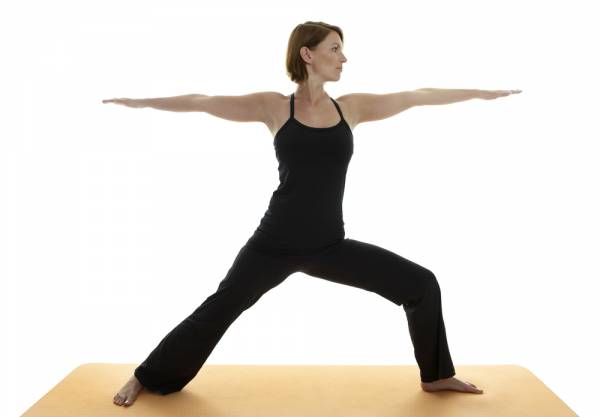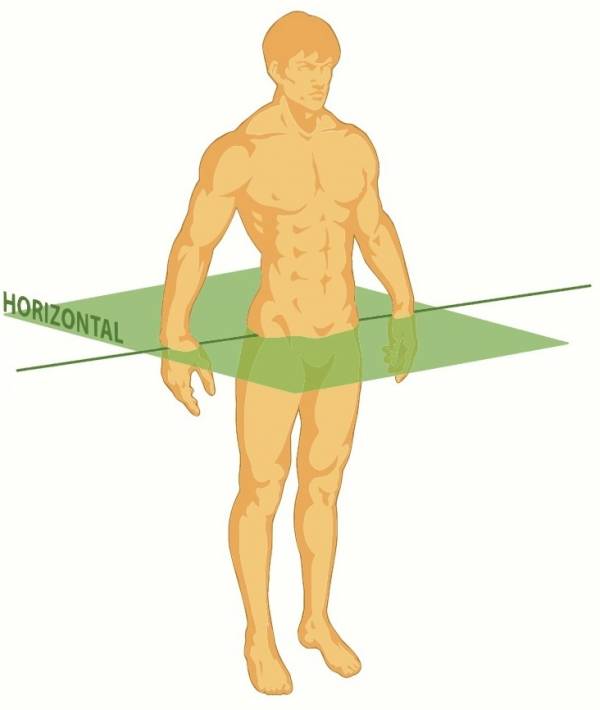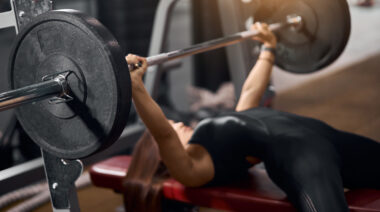The body exists on a three-dimensional plane, but so often we stretch in only a one-dimensional way. By incorporating all three planes of movement into your mobility time, you will increase your range of motion, prevent injuries, and provide greater stability for your body.
The body exists on a three-dimensional plane, but so often we stretch in only a one-dimensional way. By incorporating all three planes of movement into your mobility time, you will increase your range of motion, prevent injuries, and provide greater stability for your body.
The Sagittal Plane
The sagittal plane divides the body into left and right. When we move along this plane, we are using the strength of our muscles to move parts of the body forward or backward. Extension and flexion happen along the sagittal plane.
This means most running, biking, rowing, and lifting movements make use of this plane. For example, in a squat, both hips move from extension into flexion, and back into extension. The hips and knees in particular spend a lot of time in flexion, so mobility work should involve extending both joints.
One area of the body we often forget to extend? The back. Every time we fold forward – think deadlifts or simply picking objects up around the house – we flex the spine. Many of us can go through an entire day without ever taking the spine into extension.
Yoga relies on back bending to keep the spine supple and young. Finding time to extend your spine every day, even by simply laying over a yoga bolster, can leave you feeling as if you have more room in between your vertebrae.
The Coronal Plane
The coronal plane divides the body into front and back. When we move along this plane, we are moving toward or away from the midline. Adduction and abduction are movements along this plane. Many of our daily movements and exercises involve very little abduction. We tend to stay fairly neatly hugged in toward the middle.

Yoga practice takes the body through abduction each time you come into a squat, a warrior-two family pose, or draw the arms out and up as you rise to stand. Pulling your limbs away from the midline helps to both functionally strengthen and open the abductor muscle groups of the hips and shoulders.
Knees and elbows, as hinge joints, are limited to flexion and extension and cannot truly move on the coronal plane. To incorporate abduction into your daily life, sit in an un-weighted squat for a few minutes a day with the arms open wide. Your body will thank you.
The Transverse Plane
The transverse (or horizontal) plane divides the body into top and bottom, but it is a little less straightforward. Any time we rotate a joint we are moving along the transverse plane. In daily life, this is the action we do least frequently, particularly with the large joints in the hips, shoulders, and spine.

For this reason, yoga incorporates a lot of twisting and rotating. Each time you come to your mat, you will likely be guided into at least one spinal twist.
Spinal twisting in particular provides a large host of benefits: it relieves muscular pain in the back by lengthening the long muscles, particularly the latissimus dorsi (lats); it provides length between the vertebrae and restores movement along the spine; and, it compresses the organs, helping them send fluids and toxins to the glands in order to detoxify the body.
Every day, incorporate transverse movement into your body by lying on your back, squeezing the knees into the chest and circling the hips in both directions, rolling the shoulders around in their sockets, and twisting your knees to one side and the other. You don’t need a fancy yoga class – or even a yoga pose, really – to get the benefits of moving your body through the transverse plane.
If you’re stuck on a few movements or stretches, you may be limiting your ability to truly increase your range of motion. Most of our major muscles groups exist in more than one plane. The glutes, for example, aid in extending the spine, abduct the hips, and externally rotate the hips.
This huge muscle group takes a part in all the planes of movement. By incorporating a movement along each plane into a stretching session for your glutes, you will better target the areas of functional tightness in this muscle group.
Photos courtesy of Shutterstock.






